Ready to find your ideal master's program?
www.mastersprogramsguide.com is an advertising-supported site. Featured or trusted partner programs and all school search, finder, or match results are for schools that compensate us. This compensation does not influence our school rankings, resource guides, or other editorially-independent information published on this site.
For centuries, people around the world have sought to preserve the past. We also want to understand its influence on the future. Take the Western world. Here, Herodotus studied the earliest surviving texts on Greek history. These date to the 5th century BCE. Zuo Qiuming’s Zuo Zhuan documented Chinese history as early as the 8th century BCE. Both academics and amateur historians alike! They both have spent the past 2,500 years making sense of the world through history. Fast forward to the 21st century. History is an important academic discipline. It has not lost its importance.
Graduate students learn how the past is similar or different to the present through prisms such as:
- Social relationships
- Technological development
- Economic trends
History graduate students appreciate stories. They know every object, person, and place in their lives has an interesting story to tell. History courses train graduate students to synthesize information from sources into cohesive narratives. A history degree also shows employers you can:
- research
- write
- present new information
Aspiring historians begin their academic careers with bachelor’s degrees in the field. When earning their bachelor’s degree, students learn about major historical events through different lenses. A history major allows specialization in subjects like:
- Gender history
- African history
- World history
- Early modern history
- The history of technological change
The top grad schools for history may even allow you to choose multiple areas of focus.
Upper-level students are also asked to complete final projects. All history schools vary in terms of their course requirements. Each graduate program has a different number of courses, substantial research papers, and other history courses required. There are even online master’s degrees offered by many a history department!
A BA in history, coupled with an internship, can lead to an entry-level position in a non-academic field. Graduates need to complete at least a master’s degree in history. You’ll pursue areas of specialty in colloquia and seminars. These allow deep dives into recent research. You’ll pursue a comprehensive exam or thesis option. You’ll work with a faculty advisor to select historical topics for research. You may complete a thesis.
Graduates of the best history masters programs often advance to Ph.D. programs. Tenure-track faculty and research positions ask for doctoral degrees. A degree can open career opportunities without years of Ph.D. work. Decide to specialize in library science and public history? You can often find work with public libraries and government agencies. They are often tasked with historical preservation. An MA in history paired with an education degree can boost earnings for K-12 teachers. You can also pursue full-time teaching positions at two-year schools. There are even adjunct teaching positions at four-year schools. According to the American Historical Association, history program enrollment from the 1990s into the 21st century has declined. A graduate degree means more job opportunities.
See Also: 10 Best Master’s in Industrial Engineering
COMMON APPLICATION AND ADMISSION QUESTIONS
History departments have specific selective processes for MA programs. The programs will challenge you to show why you fit into an MA program. You can choose from various tracks. These include standalone MA degrees, joint degrees, and the MA-to-Ph.D. track. The admissions process will determine your readiness for graduate studies.
GPA Considerations
Top programs don’t often publish GPA cutoffs for their applicants. You’ll need an undergraduate GPA of at least 3.0. Some master’s programs only ask for a few upper-level history courses. You’ll provide official transcripts along with:
- Resumes
- Letters of recommendation
- Curriculum vitae
- Internships, awards, and other distinctions
Unique Attributes
Graduate school staff often look for combinations of field-specific activities and unique experiences. Top history graduate programs request two to three letters of recommendation. Often, one letter must come from a history professor. You’ll tell your story through written components, like an academic sample. Top programs ask for research papers of 10 to 20 pages. These explore historical topics.
Written Component
Faculty check written samples for:
- Originality
- Organization
- Depth of research
- Writing skills
Prospective MA candidates also submit 2- to 3-page statements of purpose. You’ll explain how you will use your graduate education to contribute to the discipline. The GRE tests analytical and communications skills. The first two sections ranks on a scale of 130 to 170. The last follows a 0-to-6 scale.
History programs rarely publish their expected scores for MA applicants. Accepted ranges vary from year to year. U.S. News & World Report notes average section scores were as follows:
- 150.05 for Verbal Reasoning
- 152.80 for Quantitative Reasoning
- 3.5 for Analytical Writing
Application Process
The application process often includes a one-time application fee. The average fee for programs listed below is $86. Fees among top programs start at $30. They go all the way up to $125. Consider how you will pay for your degree.
WHAT ABOUT FINANCIAL AID & SCHOLARSHIPS?
Tuition for a typical master’s program in history continue to increase. This is in line with other graduate programs. The Urban Institute and Higher Ed Insight published a 2016 report on graduate costs. Students at public universities paid an average of $11,100 for in-state tuition. They pay $22,590 for out-of-state tuition during the 2015-2016 school year. These rates were up from $7,780 and $18,370 during the 2005-2006 school year. During this same period, graduate degree costs at private universities rose from $21,530 to $25,160. You can take out student or personal loans. This will give you a delay paying educational costs until after graduation.
Be Wary of Student Loan Debt
This approach is common. It’s not the only way to approach graduate school finances. A separate report from the Urban Institute and Higher Ed Insight had interesting findings. It found 65% of master’s students who earned degrees in 2011-2012 left with debt. This includes 44% who held debt exceeding $25,000. Student loan debt can weigh on your finances. It can last for decades. Universities often feature work-related financing opportunities for promising MA students. A teaching assistant helps with undergraduate courses. In exchange, you’ll receive a tuition reduction or waiver. You may also get a stipend for living costs. Research assistants work with faculty members on:
- Public history projects
- Books
- Other Publications
There are many other initiatives as well.
Funding from History Departments
In some cases, history graduate programs provide funding for test-graders. You might also work as a project assistants who can assist with day-to-day tasks. Search for departmental prizes and competitions. These offer recognition and cash awards. Fellowships and scholarships are often aimed at particular subject areas or student backgrounds. These can also help. Some programs use travel grants. These encourage conference attendance and out-of-state research. Combining funding sources from the university and department can lessen total expenses. State historical organizations and public agencies are often-overlooked funding sources, too.
The Massachusetts Historical Society offers 4-week-long funded fellowships to 20 researchers each year. MHS fellows complete their work at participating organizations on a topic related to state history. The Iowa Department of Cultural Affairs encourages participation in its Historical Resource Development Program. This issues grants to public history education and preservation projects. One $1,000 grant includes the publication of the author’s work in Annals of Iowa. Recipients of similar grants and fellowships not only receive funding. You’ll also gain valuable credentials for your resume.
Funding From National Organizations
If you intend to complete Ph.D. work, you may also find specialized funding through national organizations. For example, the American Meteorological Society encourages advancement in its field. There’s a one-year Graduate Fellowship in the History of Science. There’s one award of $15,000 to a pre-dissertation candidate each year. You’ll conduct research in atmospheric and oceanic sciences history. They will present it at the organization’s annual conference. Applicants must submit:
- A cover letter
- Resume
- Transcripts
- A research plan
- Three letters of recommendation
HOW MUCH CAN I MAKE WITH A MASTER’S DEGREE IN HISTORY?
A master’s program in history can lead to a rewarding career path. Understand the job market before setting down your desired career paths. The typical paths for MA holders are faculty and academic research positions. The Bureau of Labor Statistics predicts a positive outlook for historians. This job category should grow 6% from 2018 to 2028. This exceeds the 5% average for all occupations. The BLS also notes something interesting. There will be strong competition for these jobs, due to the volume of degree holders. The average historian earned a salary of $61,140 in 2018.
Historians are not limited to academics in the BLS figures. The Bureau of Labor Statistics also includes historians in other areas. This includes those employed by corporations, nonprofits, and government agencies. History professors should fare better than historians. The BLS found an average salary of $78,470 for all postsecondary teachers in 2018. Glassdoor narrows the view to history professors with a $69,870 salary, as of October 2019. This average includes a range from $57,000 to $93,000 based on 130 positions. Postsecondary teaching positions should grow by 11% between 2018 and 2028. This is often in the form of part-time positions. MA graduates may need to consider creative approaches to career development. Historians Robert B. Townsend and Julian Brookins published a 2016 essay titled “The Troubled Academic Job Market for History.” In it, they found a significant gap between Ph.D. holders and open jobs.
Job listings from the American Historical Association were less than half those of history doctorates. These were degrees conferred during the 2014-2015 school year. AHA President Jan Goldstein wrote in 2014 that retirement-aged professors were not retiring in large numbers. They enjoyed their work! They remained able to complete their duties. Research non-academic positions that leverage their skills. Indeed researched the 10 most popular history jobs in the United States. Park rangers reached the top of this list. This is thanks to the historical background needed for these positions.
A park ranger might:
- Providing information to visitors
- Overseeing research for displays
- Leading tours of specific park features
Governments hire the majority of rangers. Nonprofit historical organizations need rangers to oversee their grounds. Museum archivists and librarians followed park rangers on the list. These positions relate to graduate history programs. Universities offering specializations in each field. Indeed highlighted the writing skills built through MA programs by listing writers on its list. Lawyers are also included on Indeed’s list. History graduates examine documents and communicate their findings. Are you pursuing a conventional or creative career path in history? You can start strong with top master’s programs. Our rankings show the range of MA programs in history, including general, ancient, and art history degrees.
OUR RANKING CRITERIA
We have a time-tested, four-part formula. We rank the best history graduate programs in the nation. We’d love to share it with you in our top grad schools for history ranking! We focus on four major factors:
- Earnings Potential
- Affordability
- Student Satisfaction
- Selectivity
Reliable research is the main ingredient in our recipe for success. We don’t make recommendations based on personal opinions or financial incentives. Our revenue and content are separate. Sponsored schools have no impact on our rankings. They have to have incredible academic programs! If you want to know more, we encourage you to check out our methodology page.
Ready to discover the top grad schools for history? Check out our ranking of the 10 Best Master’s Programs in History!
#1. UNIVERSITY OF WISCONSIN-MADISON
MASTER OF ARTS IN HISTORY
 You’ll find one of the best American History graduate programs at the University of Wisconsin. The University of Wisconsin-Madison’s history goes back to the origins of Wisconsin itself. The Wisconsin Territory became a state in 1848. Its first public university opened the same year. The school has been an innovation center ever since. For example, it is home to a radio station founded in 1919. It is still operating today. The University of Wisconsin has grown from its small Madison campus. It has become a 24-campus system extending from Superior to Milwaukee. Diverse minds like writer Saul Bellow and architect Frank Lloyd Wright attended this school. The Master of Arts in History at the University of Wisconsin-Madison strengthens the school’s academic reputation. U.S. News & World Report confirmed this reputation with a No. 9 ranking in History for 2019. This included placements at No. 2 in Women’s History. It was No. 2 in Latin American History.
You’ll find one of the best American History graduate programs at the University of Wisconsin. The University of Wisconsin-Madison’s history goes back to the origins of Wisconsin itself. The Wisconsin Territory became a state in 1848. Its first public university opened the same year. The school has been an innovation center ever since. For example, it is home to a radio station founded in 1919. It is still operating today. The University of Wisconsin has grown from its small Madison campus. It has become a 24-campus system extending from Superior to Milwaukee. Diverse minds like writer Saul Bellow and architect Frank Lloyd Wright attended this school. The Master of Arts in History at the University of Wisconsin-Madison strengthens the school’s academic reputation. U.S. News & World Report confirmed this reputation with a No. 9 ranking in History for 2019. This included placements at No. 2 in Women’s History. It was No. 2 in Latin American History.
MA history program applicants must first qualify for admission to the Graduate School. Then they can apply to the History Graduate Program. You will need a bachelor’s degree. You should have a 3.0 GPA. You’ll complete a supplemental application. This indicates areas of interest and faculty preferences. The History Graduate Program asks for official transcripts. You’ll need to provide recent GRE scores, too. Provide a writing sample of up to 50 pages. You will also need a statement of purpose of up to three pages. You must also pay a $75 fee.
The University of Wisconsin-Madison emphasizes the MA-to-Ph.D. path. There are multi-year funding opportunities for Ph.D. aspirants. MA applicants are also allowed to seek outside funding. There are no MA-specific funding opportunities. You can select from eight concentrations, including:
- East Asian History
- Latin American and Caribbean History
- U.S. History
Every student starts with foundational courses like global perspectives and historical research. You’ll choose the remaining 26 credits based on your interests. You’ll complete graduate-level courses for half of the 30 credits.
Graduate courses explore topics such as the politics of persuasion. You may also take the history of higher education in Europe and America. In your fourth semester, you’ll take the Second-Year Review. This shows the rigorous standard applied to future historians. To pass the SYR, you must:
- Write a research paper of up to 35 pages
- Show foreign language skills
- Complete 30 credits
Admission:
You’ll also need a GPA of at least 3.0 to complete the degree or advance to the Ph.D. program. You’ll attend preliminary exam workshops. These provide lessons in committee selection and course selection. The Department of History also hosts mock interviews and curriculum vitae review sessions. These are essential for the job market. Alumni speak with current students about academic and professional opportunities.
#2. HARVARD UNIVERSITY
MASTER OF LIBERAL ARTS IN HISTORY
 Harvard University has a long history and strong academic programs. This led to its No. 1 rank among Best Global Universities by U.S. News & World Report in 2019. You’ll find one of the best history grad schools here, too.
Harvard University has a long history and strong academic programs. This led to its No. 1 rank among Best Global Universities by U.S. News & World Report in 2019. You’ll find one of the best history grad schools here, too.
The university opened in 1636, preceding Massachusetts’ statehood by 144 years. Harvard evolved from a Christian-centered institution to a liberal arts school over its first two centuries. This private school has influenced American politics at the highest levels, producing eight future presidents, from John Adams to Barack Obama. Harvard has also influenced popular culture. TV host Conan O’Brien and director Terrence Malick are among its alumni. Forbes certified Harvard’s return on investment to graduates with a No. 7 place among America’s Best Value Colleges 2019.
The Master of Liberal Arts in History is among the history program offerings. These turn graduates into successful professionals.
MLA students can apply for the Harvard Extension School Grant to offset their educational costs. There are many funding opportunities for history students. These include scholarships for Massachusetts and Rhode Island residents. The Lowell Scholarship for current secondary school teachers. Each MLA course in 2019-2020 cost $2,840, with an estimated cost of $34,080 for all courses. Candidates complete one-third of their courses before receiving formal admission to the program. The MLA in History is a 12-course track. It includes:
- The main history seminar
- Five courses
- One extra seminar
- Two electives
You’ll draw from course offerings examining topics such as:
- The Plymouth Colony
- The American Constitution
- U.S.-China relations
The Harvard Extension School offers both thesis and capstone degree completion options. Thesis candidates complete a proposal tutorial. They also complete a two-part thesis process.
The capstone option features an extra elective. You’ll also take two courses on social reform movements. You can add an American Literature and Culture certificate. MLA candidates at Harvard experience more flexibility in course options than candidates at other schools on this list. The Harvard Extension School asks for at least three courses in Cambridge. You’ll find many options outside of the conventional Monday-to-Friday course schedule for the rest. History courses are available online. You can take classes in-person during 3-week January terms. Another choice is 3- or 7-week summer terms. You’ll have five years from their first courses to complete courses.
Admission:
The Harvard Extension School features a multi-stage process for admission to the MLA history program. Complete an introduction to graduate studies seminar. You’ll also complete two graduate history courses before applying. There is no application for this first stage. You can blend courses into upper-level bachelor’s degree work. You’ll need to complete each first-stage course with a “B” grade or better. The formal application for the MLA asks for a resume and official transcripts. Harvard asks first-stage students to apply within two years of completing the seminar. Otherwise they must pay a delayed application charge of $300. The application fee for the MLA is $100.
#3. STANFORD UNIVERSITY
MASTER OF ARTS IN HISTORY
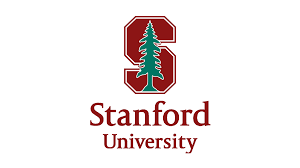 Stanford University’s commitment to academic research connects to its history. In 1919, future U.S. President Herbert Hoover established the Hoover Institution to maintain artifacts from the First World War. Researchers from around the world work in research centers like the Woods Institute for the Environment. Forbes acknowledged the school’s top-flight status with a No. 2 ranking in Top Colleges 2019 and a No. 6 in America’s Best Value Colleges 2019. Stanford students excel beyond the classroom and labs. They have recent national championships in men’s gymnastics and women’s soccer. In class, you’ll carry on the university’s legacy through innovative research. You’ll need three letters of recommendation. You’ll also provide two copies of official transcripts with their applications.
Stanford University’s commitment to academic research connects to its history. In 1919, future U.S. President Herbert Hoover established the Hoover Institution to maintain artifacts from the First World War. Researchers from around the world work in research centers like the Woods Institute for the Environment. Forbes acknowledged the school’s top-flight status with a No. 2 ranking in Top Colleges 2019 and a No. 6 in America’s Best Value Colleges 2019. Stanford students excel beyond the classroom and labs. They have recent national championships in men’s gymnastics and women’s soccer. In class, you’ll carry on the university’s legacy through innovative research. You’ll need three letters of recommendation. You’ll also provide two copies of official transcripts with their applications.
The most common path for an MA history program student is the completion of a Ph.D. with faculty positions in mind. You can select from 14 majors. Available majors explore subjects like:
- East Asia
- Jewish history
- Modern Europe
You’ll complete nine graduate courses. These include one seminar and four colloquia. The course schedule includes offerings on imperial Chinese cities and the birth of Islam. Each MA candidate works with a faculty advisor in their first quarter to develop a degree path including major courses. Complete your work within three years of your first courses at Stanford. Future historians benefit from research and networking opportunities. The Department of History works with other departments to invite guest lecturers each quarter. These discuss interdisciplinary topics. Doctoral teams have produced publications on:
- Waste in Africa
- Animals in the Civil War
- Chinese migrants who worked on the Transcontinental Railroad
The Graduate Student Council also offers an avenue for involvement in student governance.
Admission:
Send GRE scores. Prospective MA candidates show their writing chops through writing samples of up to 25 pages. You must also pay a $125 fee. MA candidates in the history program can apply for the prestigious Knight-Hennessy Scholars program. The university names 100 participants to the program each year from a variety of academic disciplines. This distinction covers 100% of a recipient’s tuition for one year. Terminal MA candidates are not eligible for teaching assistantships or fellowships. This is due to the university’s focus on training Ph.D. candidates to become teachers. You can choose from several paths. The terminal MA path will prepare you for a career after completion of the MA thesis. Students interested in advanced studies can opt for the joint BA/MA in History. The joint MA/JD program provides credentials in history and law.
#4. UNIVERSITY OF CALIFORNIA, LOS ANGELES
MASTER OF ARTS IN HISTORY
 At the University of California, Los Angeles, you’ll enjoy a beautiful environment. Not to mention quality academics! The campus enjoys an average of 292 sunny days per year. It offers easy access to beaches and hiking trails. Niche’s 2020 grades for this public university include No. 1 in Best College Campuses in America. It is No. 2 in Top Public Universities in America. It’s No. 14 in Best Colleges for History in America. Forbes pointed to the value of a UCLA degree with a No. 4 in America’s Best Value Colleges 2019. UCLA’s athletics programs have spread the Bruins’ name through recent national titles in:
At the University of California, Los Angeles, you’ll enjoy a beautiful environment. Not to mention quality academics! The campus enjoys an average of 292 sunny days per year. It offers easy access to beaches and hiking trails. Niche’s 2020 grades for this public university include No. 1 in Best College Campuses in America. It is No. 2 in Top Public Universities in America. It’s No. 14 in Best Colleges for History in America. Forbes pointed to the value of a UCLA degree with a No. 4 in America’s Best Value Colleges 2019. UCLA’s athletics programs have spread the Bruins’ name through recent national titles in:
- Women’s softball
- Women’s soccer
- Men’s baseball
The MA program acts as a first step toward a doctorate in history. All MA students must pursue a terminal degree. UCLA history faculty teach in 12 study areas including:
- African history
- Japanese history
- Scientific history
- History of sexuality
The Fall 2019 course schedule explored topics like the Political Economy of Race and Advanced Historiography. In past semesters, students dug into courses like Cuban History and Jewish History. You can join the History Graduate Student Association. This student-led organization sponsors an annual conference featuring presentations on the latest research in various historical fields. The HGSA assists with the College PATHS program. You can mentor high school students in East Los Angeles. You can attend lectures and colloquium to further conversations about departmental research.
Admission:
Candidates for the Master of Arts in History continue the school’s winning tradition thanks to a rigorous degree path. Submit three letters of recommendation from previous professors.
History faculty evaluate an applicant’s writing skills through a two-page personal essay. You’ll also submit a writing sample of up to 10 pages. The foreign language needs for each student depends on their specialization. You must have studied at least one foreign language. UCLA needs a 3.0 GPA. You’ll submit GRE scores, with the Verbal section scrutinized closest by admission officials. You’ll pay a $120 application fee. There are waivers available based on financial need. You may try fellowships. These exchange tuition funding for research and teaching service.
#5. UNIVERSITY OF PENNSYLVANIA
MASTER OF ARTS IN ANCIENT HISTORY
 The University of Pennsylvania has deep roots in American history, thanks to its famous founder. Benjamin Franklin spearheaded the formation of the university. He served as its first president in 1740. The university revolutionized higher education in the American colonies by teaching liberal arts and technical skills. In the 19th century, the University of Pennsylvania expanded its innovative approach to education with the country’s first teaching hospital. This opened in 1874. The first business college opened in 1881. U.S. News & World Report has recognized the university’s commitment to continuous improvement. It gave it a No. 6 ranking among National Universities. It has a No. 15 placement among Best Value Schools. This storied school expands beyond its own history with graduate history programs like the Master of Arts in Ancient History.
The University of Pennsylvania has deep roots in American history, thanks to its famous founder. Benjamin Franklin spearheaded the formation of the university. He served as its first president in 1740. The university revolutionized higher education in the American colonies by teaching liberal arts and technical skills. In the 19th century, the University of Pennsylvania expanded its innovative approach to education with the country’s first teaching hospital. This opened in 1874. The first business college opened in 1881. U.S. News & World Report has recognized the university’s commitment to continuous improvement. It gave it a No. 6 ranking among National Universities. It has a No. 15 placement among Best Value Schools. This storied school expands beyond its own history with graduate history programs like the Master of Arts in Ancient History.
This MA program differs from others on this list. It is not housed in a single department. The Graduate Group in Ancient History draws on faculty from seven departments, including:
- Anthropology
- Art history
- Religious studies
Both Ph.D. and MA students follow similar paths through the first two years of study. A seminar in classical studies prepares first-year candidates for the ins and outs of studying the ancient world. The program’s design allows participation in similar seminars across the seven participating departments. Each candidate consults with their faculty advisor to design a degree path. This fits with career interests.
Available courses dig deep into subjects like:
- Greek sanctuaries
- Ancient medicine
- The architecture of Rome
In the second year of study, each MA student prepares for a qualifying exam. This includes language proficiency components. It is one of the most hands-on history programs.
The qualifying exam precedes the defense of a research project before a faculty committee. Ph.D. students balance coursework with teaching responsibilities. This is before dissertation research. Ancient history students can expand their studies beyond the classroom. The university maintains study abroad opportunities with the American School for Classical Studies at Athens. You can also study at the American Academy in Rome. For students interested in studying abroad, you can do so after completing core courses. Centuries of commitment to historical studies at the university mean abundant resources for graduate students. The University of Pennsylvania Libraries house collections at the Schoenberg Institute for Manuscript Studies. Those interested in ancient history advance the field, too. They use centers like the Center for Ancient Studies and the Wolf Humanities Center.
Admission:
You’ll need to have some language proficiency. Successful MA candidates have completed undergraduate courses in at least two languages, such as Arabic and Greek. These are common in ancient texts. You may also need to register for ancient language courses as necessary to aid their studies. You must provide current GRE scores and transcripts. Faculty evaluators in the Graduate Group also request a 15-page historical research paper, to determine preparedness for the program.
The University of Pennsylvania charges an $80 fee per application.
#6. UNIVERSITY OF TEXAS AT AUSTIN
MASTER OF ARTS IN ART HISTORY
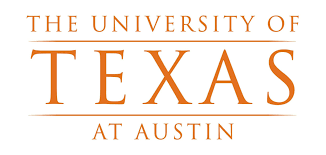 The University of Texas at Austin is one of the nation’s largest universities. It had 51,991 students enrolled during the 2021-22 school year. Founded in 1883, the university first focused on agricultural, mining, and engineering programs. Of course, graduate history programs are popular as well! These were all useful for industries on America’s frontier. The university has grown to become a global leader in higher education. Forbes placed the school No. 76 in Top Colleges 2019. It is No. 65 in America’s Best Value Colleges 2019. The UT football and basketball teams have raised the university’s profile through recent successes. Alumni of the university range from film director Wes Anderson to former U.S. Supreme Court Justice Tom Clark. The Master of Arts in Art History has turned the school into a thought leader.
The University of Texas at Austin is one of the nation’s largest universities. It had 51,991 students enrolled during the 2021-22 school year. Founded in 1883, the university first focused on agricultural, mining, and engineering programs. Of course, graduate history programs are popular as well! These were all useful for industries on America’s frontier. The university has grown to become a global leader in higher education. Forbes placed the school No. 76 in Top Colleges 2019. It is No. 65 in America’s Best Value Colleges 2019. The UT football and basketball teams have raised the university’s profile through recent successes. Alumni of the university range from film director Wes Anderson to former U.S. Supreme Court Justice Tom Clark. The Master of Arts in Art History has turned the school into a thought leader.
First-year students seeking the MA in Art History follow a two-year degree path. You’ll complete the necessary seminars in three semesters. Your final semester contains thesis work. You may also choose a concentration, with available tracks including:
- General
- Ancient
- Medieval to Early Modern
- Modern
The 30-credit MA includes:
- An art historical methods course
- Four seminars
- Two thesis courses
You can apply to portfolio graduate history programs in outside disciplines. Examples include nonprofit studies and cultural studies. You’ll complete four related courses, a presentation, or fieldwork for these history programs. You must show proficiency in at least one foreign language. MA history graduates who want to pursue academic careers can stay in-house by applying to the Ph.D. in Art History.
The University of Texas at Austin encourages the study of art history through on-campus museums. Its history programs are some of the most hands-on. The Blanton Museum of Art holds 17,000 visual art works. There are concentrations in European and Latin American art. You can work in The Mesoamerica Center or the Center for the Study of Ancient Italy. You can also explore the art world at facilities like the Creative Research Lab. You’ll even use study abroad connections to bring the past to life.
Admission:
You do not have to have a degree in art history. You should have completed at least 18 college credits in similar fields, to build their foundational knowledge towards their graduate degrees.
You will need to submit two writing samples and a statement of purpose. You’ll also provide:
- A resume
- GRE scores
- Official transcripts
- Three letters of recommendation
A $65 fee is due upon the submission of each application. Funding opportunities for graduate students include stipends for grading. There are also research assistant positions.
#7. UNIVERSITY OF NORTH FLORIDA
MASTER OF ARTS IN HISTORY
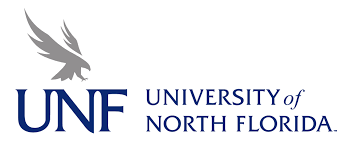 The University of North Florida is the youngest institution on this list, with its first classes held in 1972. This public university is in Jacksonville, FL. U.S. News & World Report shows the school’s rapid growth outside the South. It has a No.140 ranking among Top Public Schools. It is No. 281 among National Universities. The Coggin College of Business generates the most attention for producing successful graduates. The Master of Arts in History flies under the radar. It appeals to students with affordability and a strong curriculum.
The University of North Florida is the youngest institution on this list, with its first classes held in 1972. This public university is in Jacksonville, FL. U.S. News & World Report shows the school’s rapid growth outside the South. It has a No.140 ranking among Top Public Schools. It is No. 281 among National Universities. The Coggin College of Business generates the most attention for producing successful graduates. The Master of Arts in History flies under the radar. It appeals to students with affordability and a strong curriculum.
The MA in History is available in both thesis and non-thesis paths. You’ll complete three graduate lectures and three research seminars. You’ll select four courses on subjects like:
- Mark Twain’s America
- The Crusades
- Islamic history
The Department of History features courses in American, Asian, European, and Latin American history. Thesis track students finish between two – five thesis research courses. This depends on their progress to completion. A thesis must be completed within two years of a student’s final course. Non-thesis candidates add two electives to their degree path. This is instead of thesis research courses. The final product of a non-thesis MA is a research paper defended in front of a faculty committee. You can add practical experience to their resumes as they finish their graduate degrees. Graduate students maintain an online document archive called Florida History Online. You could also intern with local organizations like the Jacksonville Historical Society and the Cummer Museum of Art & Gardens.
Admission:
Applicants do not need to submit GRE scores. Official transcripts from previous universities should show a GPA of 3.0. All applicants must have completed at least 15 credits in history before applying. A bachelor’s degree in the field is not needed. You’ll submit writing sample on a historical topic. You’ll also submit a statement of intent up to five pages in length.
You should also submit three letters of recommendation for these history programs. These will confirm your commitment to historical research. The application fee for all graduate programs at the University of North Florida is $30. There are funding opportunities through the Department of History and the Graduate School. Graduate teaching assistants in the Department of History receive monthly stipends and tuition discounts for their work. The History Prize is given to one graduate student each year. It includes a $100 award and a departmental plaque. The prize is awarded based on the skill and uniqueness of your work. The Graduate Scholarship offsets tuition costs for promising first-year students. The University of North Florida also offers the Delores A. Auzenne Fellowship for Graduate Study. This is for exceptional students in underserved disciplines. The Graduate Research Grant Program and the Student Affairs International Learning Scholarships promote study abroad and advanced research opportunities.
#8. MIAMI UNIVERSITY
MASTER OF ARTS IN HISTORY
 Miami University has some of the best history programs. It’s history runs parallel with the growth of the early United States. The Ohio State Legislature chartered the university in 1809. It opened in 1824 after many delays. This public institution has continued 19th-century traditions. This includes a robust fraternity and sorority scene. It dates to 1833. Miami has grown from a frontier school. It is now a global institution with four Ohio campuses and a residential college in Luxembourg. U.S. News & World Report recognized the school with a No. 91 rank among National Universities. It has a No. 8 place for Best Undergraduate Teaching. Miami’s Master of Arts in History embraces the school’s deep roots while matching the standards set by other graduate history programs. You’ll provide unofficial transcripts. You’ll need a 3.0 GPA.
Miami University has some of the best history programs. It’s history runs parallel with the growth of the early United States. The Ohio State Legislature chartered the university in 1809. It opened in 1824 after many delays. This public institution has continued 19th-century traditions. This includes a robust fraternity and sorority scene. It dates to 1833. Miami has grown from a frontier school. It is now a global institution with four Ohio campuses and a residential college in Luxembourg. U.S. News & World Report recognized the school with a No. 91 rank among National Universities. It has a No. 8 place for Best Undergraduate Teaching. Miami’s Master of Arts in History embraces the school’s deep roots while matching the standards set by other graduate history programs. You’ll provide unofficial transcripts. You’ll need a 3.0 GPA.
You’ll complete seven core courses. These include:
- Two research seminars
- Two colloquia
- Explorations of historical methods and theories
Then you’ll select a concentration in:
- Art history
- Geographic information systems
- General history
- Interactive media studies
Each concentration features at least three courses. These prepare you for specialized areas of historical study. The Department of History expects you to decide on a thesis or comprehensive exam option by the middle of their second semester. Over the past decade, MA candidates have completed theses on a variety of topics. An example is literary representations of womanhood in 17th century England. History faculty have published books on:
- Charles Darwin
- The Gettysburg Address
- Russian cinematic history
Admission:
Miami requests GRE scores from applicants. The history subject test is optional. All applicants provide writing samples of at least 10-20 pages of historical research. Submit a personal essay of three pages. You’ll need three letters of recommendation. You can opt for the department’s Combined BA/MA. You’ll complete five years of study. The Combined BA/MA path asks for a 3.5 undergraduate GPA along with other application materials. You must include a $50 fee with their application materials. The most common form of financial aid is a graduate assistantship.
Graduate assistants receive monthly stipends. That, plus tuition offsets the financial aid package. Each graduate assistantship features a separate application. Funding is renewable for up to two years. Graduates of the MA in History may opt to continue on to doctoral studies at other institutions or pursue work after graduation.
#9. COLUMBIA UNIVERSITY
MASTER OF ARTS IN ART HISTORY
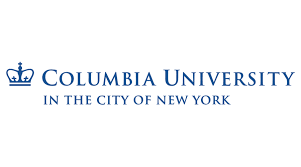 Another one of the best graduate history programs is at Columbia University. Columbia University has trained future historians from its Manhattan campus since the 18th century. First King’s College, it then became Columbia College. Now it is Columbia University. This private university have borne witness to the American Revolution and industrialization. The campus houses historical buildings such as the Butler Library. Columbia University’s connection to the past is also sustained through sculptures by Daniel Chester French and Greg Wyatt. Niche’s 2020 grades placed Columbia among the leading universities in the United States, with a No. 3 in Colleges with the Best Professors in America. It is the No. 4 in Best Colleges for History in America. The Master of Arts in Art History draws on Columbia’s resources and reputation to train future historians.
Another one of the best graduate history programs is at Columbia University. Columbia University has trained future historians from its Manhattan campus since the 18th century. First King’s College, it then became Columbia College. Now it is Columbia University. This private university have borne witness to the American Revolution and industrialization. The campus houses historical buildings such as the Butler Library. Columbia University’s connection to the past is also sustained through sculptures by Daniel Chester French and Greg Wyatt. Niche’s 2020 grades placed Columbia among the leading universities in the United States, with a No. 3 in Colleges with the Best Professors in America. It is the No. 4 in Best Colleges for History in America. The Master of Arts in Art History draws on Columbia’s resources and reputation to train future historians.
All art history students complete 10 courses. This includes a first-semester methods colloquium. It also has a second-semester art history practice colloquium.
There are nine specializations in these graduate programs. These include Pre-Columbian Art and Archaeology. Another popular choice is the History and Theory of Architecture. You’ll submit a two-stage presentation of your thesis. A thesis-in-progress conference in your second-to-last semester asks for a presentation before fellow history students and faculty. First-year history students are eligible to pursue a joint MA in Art History from Columbia University and the Université Paris 1 Panthéon-Sorbonne.
You’ll complete one semester of four courses in Paris. You’ll complete it during the third semester. Graduates of this joint MA program receive degrees from both institutions. Yet you need not leave campus to journey into the past. The department often hosts lectures on:
- Medieval art and architecture
- Renaissance art and architecture
- Modern architecture each year
The Avery Architectural & Fine Arts Library holds more than 625,000 publications on topics ranging from real estate projects to sculpting. You can explore the arts in a variety of facilities. These include the Wallach Art Gallery and the Buell Center for the Study of American Architecture for Art History. New York City is loaded with venues and internship opportunities for MA candidates. These include the Museum of Modern Art and the Guggenheim Museum.
Admission:
The Department of Art History and Archaeology asks for a $115 fee for each completed application to its history programs.
Applicants are also asked to submit GRE scores. Because this is one of the best graduate schools for history, you’ll need scores of at least:
- 167 on the Verbal Reasoning test
- 160 on the Quantitative Reasoning test
- 5.5 on the Analytical Writing Assessment
Applicants must also submit:
- A statement of purpose of two to three pages
- An academic writing sample of up to 15 pages
- Three letters of recommendation
- A resume
- University transcripts
You must show proficiency in at least one foreign language. You can opt for full- or part-time study. Part-time candidates choose from two-year, three-year, and four-year options.
#10. NEW YORK UNIVERSITY
MASTER OF ARTS IN HISTORY
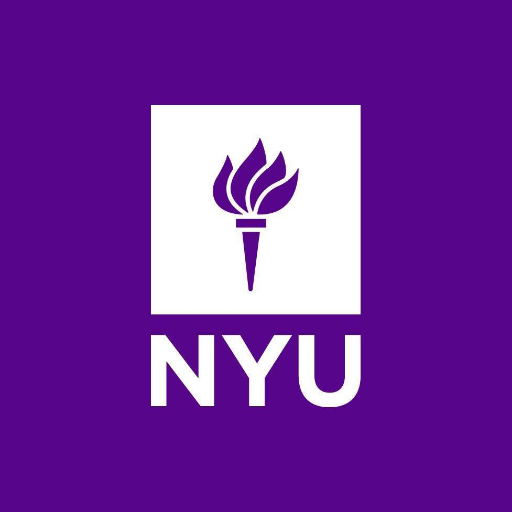 Another one of the best graduate programs is at New York University. New York University brings its world-class graduate history programs to history students throughout the world. The school’s campuses span the globe from Buenos Aires to Sydney. History students have flocked to the storied Greenwich Village campus since its founding in 1831. NYU offers an exceptional head start for post-graduate careers. It is close to corporate offices and other universities. U.S. News & World Report has recognized the school with a No. 29 rank among National Universities. It is No. 76 among Best Undergraduate Teaching. The publication focused on the Department of History with a No. 23 rank in History for 2019-2020. It provides a strong foundation for future historians and teachers.
Another one of the best graduate programs is at New York University. New York University brings its world-class graduate history programs to history students throughout the world. The school’s campuses span the globe from Buenos Aires to Sydney. History students have flocked to the storied Greenwich Village campus since its founding in 1831. NYU offers an exceptional head start for post-graduate careers. It is close to corporate offices and other universities. U.S. News & World Report has recognized the school with a No. 29 rank among National Universities. It is No. 76 among Best Undergraduate Teaching. The publication focused on the Department of History with a No. 23 rank in History for 2019-2020. It provides a strong foundation for future historians and teachers.
New York University has designed its MA program to act as a standalone degree. It’s also a step toward a doctoral degree. You can complete three semesters of full-time study. You can also complete six semesters of part-time study. Every MA student starts with a seminar detailing best practices for the profession.
You’ll complete 32 credits. A a maximum of eight credits are transferable from other MA graduate history programs. Course options cover topics such as:
- Material culture in East Asia
- Wealth and economics in African worlds
- Theories of race
The MA program also offers specializations in World History and Gender History. You’ll complete a thesis as part of the MA degree. You’ll select a thesis advisor and topic by the end of your first year. You’ll complete the thesis course by their final semester. Graduate history programs at NYU extend beyond the MA degree. The university features a Master of Arts in Archives and Public History. This is great for aspiring public historians, history students, and archivists.
The Department of History also works with outside departments on joint graduate degrees. This interdisciplinary nature makes it one of the best grad schools for history. These include departments:
- Middle Eastern Studies
- Hebrew and Judaic
- French Studies
Doctoral candidates complete 72 credits. They must also complete two written examinations. Dissertation research is also necessary. A joint MA/Ph.D. path provides a seamless transition between degrees. It has fewer core credits than the standalone versions of each of them. There’s even the Department of History’s Global Graduate History Programs. It invites academics from universities around the world to share their research. The Center for Global Asia draws on scholars from three global campuses for discussions of Asian history. South Asia at NYU leads research projects and conferences related to South Asian history. It attracts history students from all over the world.
Admission:
The application fee is $100. Applicants also submit:
- Three letters of recommendation
- Official transcripts
- Resumes
- Statement of purpose
- Writing samples of up to 35 pages

